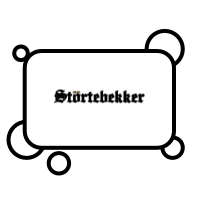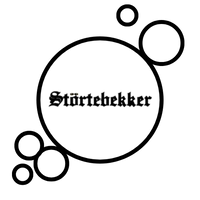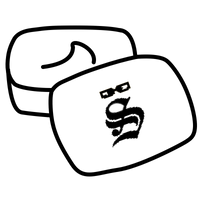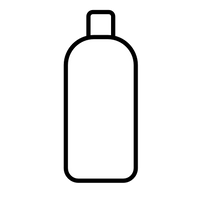Martin is a dedicated entrepreneur and passionate barbershop visitor. He has delved deeply into the world of shaving and beard care and wants to bring the unique barbershop experience into every bathroom.
There are countless beard care products available. But which beard care products really make sense?
Which beard care products should I buy? We clarify what matters.

Which products are suitable for beard care?
What you really need for beard care is simpler than what is available on drugstore shelves. A few basics are sufficient to make your beard care complete. It is important to choose high-quality products that provide nourishing substances rather than chemical additives.
We want to give you an overview of the most important tools.
1. Beard Oil
Beard oil is the standard among beard products for beard care.
Good beard oils are also what their name promises: a pure natural product made from high-quality oils such as
- jojoba oil,
- argan oil
- or grape seed oil.
Thanks to their oily-liquid consistency, you only need small amounts.
How to do:
- Drop a small amount of oil into your palms and rub it.
- From there, massage the oil into your beard and the skin underneath.
- Never skip the skin itself. The oil not only cares for the beard hair itself but also the skin underneath.
Your benefits: The beard oil makes the skin and hair supple and well-groomed. The beard hair becomes soft and looks shiny and healthy.
The skin is soothed and moisturized after shaving or care. Additionally, the oil provides a pleasant scent. With beard oil, you can also optimally reduce the itching phase you experience during beard growth and thus avoid skin irritations.
Disadvantages: You only face these if you use too much oil or apply it incorrectly. Using too much makes the beard look greasy and heavy.
If you make the mistake of applying the oil with the pipette in the beard, you transfer the bacteria from your beard to the oil with the pipette, where they can multiply.
If you use the beard oil from Störtebekker, you avoid this problem altogether! Our beard oil does not have a pipette but a simple pump dispenser, which makes dosage very easy. You can also get beard oil as part of a shaving & beard care set. Just click the link in the image.
2. Beard Cream
Beard cream offers you almost the same ingredients as beard oil. It consists largely of carrier oils, such as
- almond oil
- or jojoba oil
- and also uses essential oils for fragrance.
How to do:
- Take a small amount and rub it in your hands until it becomes soft and almost liquid.
- Then apply it to your beard and the skin underneath using circular motions.
Your benefits: Beard cream also makes skin and hair soft, well-groomed, and resilient. It keeps the hair structure healthy and gives the beard a well-groomed shine.
Additionally, the cream quickly absorbs into the skin and hair, providing moisture and protecting against dryness and inflammation.
Disadvantages: If you use too much, especially with longer beard hairs, you might get white marks on your shirt.
Always read the product description for creams carefully. Unlike beard oil, creams usually contain a lot more ingredients. Therefore, the risk of having an adverse reaction is higher.
If you use the beard oil from Störtebekker, you can avoid this problem altogether!

3. Beard Balm
Be careful not to confuse it with beard pomade. Beard balm is a pure care product and is not for styling or shaping the beard.
Its effectiveness is comparable to beard oil, but it differs in texture. Balm contains additional solid ingredients like
- lanolin,
- shea butter
- or cocoa butter.
How to do:
- Distribute a small amount in your palms and rub the balm well.
- Due to the warmth of your hands, the beard balm becomes more liquid and is easy to work into the beard and skin.
Benefits: Beard balm conditions and moisturizes beard and hair. Its effect is similar to that of beard oil. Many find beard balm more practical for the sports or travel bag.
Its solid consistency means nothing will spill out while you're on the go.
Disadvantages: Again, see beard oil. If you use too much, the beard may appear greasy. With beard balm, you should also ensure it reaches an almost liquid consistency between your hands. If it's too hard, crumbs can form in the beard.
4. Beard Wax
Beard wax is used for styling and shaping your beard hair. It has a firm consistency due to ingredients such as
- petroleum jelly
- or beeswax.
Beard wax is especially intended for moustaches. It comes in various formulations.
How to do:
- Take only a small amount to shape your moustache as desired.
- You can twist the wax into the ends or style a thicker section of beard with it.
Benefits: The product is easy to use and holds your beard style without damaging the hair structure.
Disadvantages: You should find a beard wax that best suits your moustache style from the diverse range available.
- Hungarian beard wax is well-suited for fine, thin hair.
- Bavarian beard wax often contains additional gum arabic, making it much firmer. It is ideal for twisting longer beard ends.
5. Beard Pomade
Beard pomade is also used for styling and shaping. It contains stabilizing ingredients like
- petroleum jelly,
- lanolin
- and/or beeswax.
How to do:
- Take a small amount and shape the beard as desired.
Benefits: Beard pomade can give you an advantage with many beard styles. Besides shaping and styling, you can also tame curly or unruly hair and bring it into a well-groomed shape.
If you opt for a high-quality product without additives and mineral oils, the pomade also has a conditioning effect.
Disadvantages: Similar to beard wax. You need to find the one that really suits you among the jungle of options.
Watch out for the ingredients! Mineral oils have no place in skin and hair!
6. Beard Comb and Beard Brush
Beard comb or beard brush not only detangle your beard but also help to distribute and work in care products like beard oil or beard balm optimally.
How to do:
- Depending on the length or density of your beard, you may find the comb or brush more suitable.
- Don’t just brush or comb superficially; brush or comb from the skin out.
- This way, the comb or brush can better distribute care products and skin oils throughout the beard, making it smoother and more well-groomed.
Your benefits: It not only looks more well-groomed but also gives your skin or hairline a circulation-promoting massage, which is beneficial for the skin and stimulates beard growth.
Disadvantages: We see none.
7. Beard Scissors
Yes, beard scissors are also part of beard care products. Without them, your beard can quickly look unkempt.
How to do:
- With beard scissors, the goal is to trim smaller, uncontrolled hairs to match the rest of the beard. It’s not about cutting the beard away but making it look more even and well-groomed.
- So, only trim the areas that are out of shape.
Benefits: Beard scissors have blunt ends.
Unlike nail scissors, for example, you can’t stab yourself if you make a cut at an angle. They are specifically designed for cutting beard hairs and don’t leave rough or frizzy hairs.
Disadvantages: You’ll need a bit of practice and patience. With beard scissors, you should work accurately and with a steady hand.
Conclusion
It doesn’t take much equipment for optimal beard care. As always: Pay attention to the ingredients and opt for high-quality products. In our Störtebekker shop, you’ll find complete care sets with premium items.
What do you swear by for beard care?
Our readers' most popular posts:
 Free shipping from
79 CHF
Free shipping from
79 CHF
 100 days return
100 days return
 Festes Shampoo
Festes Shampoo Body Bar
Body Bar Handsoap
Handsoap Pomade
Pomade Gesichtspflege
Gesichtspflege Deo
Deo Hair & Body Wash
Hair & Body Wash Haar Booster
Haar Booster Safety razor
Safety razor Straight razor
Straight razor Shaving soap
Shaving soap Razor blades
Razor blades Shaving accessories
Shaving accessories Beard care
Beard care Beard styling
Beard styling




















